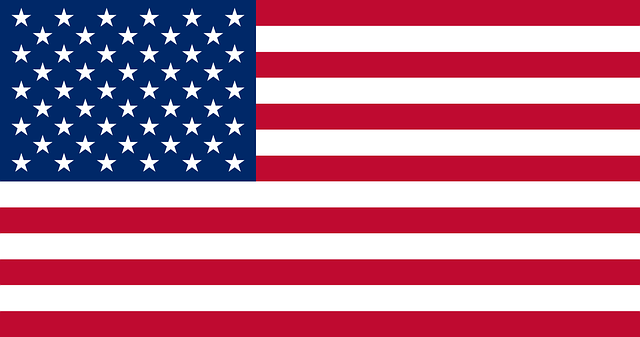The 3×5 American flag is a central and multifaceted symbol in U.S. schools, serving both as an educational tool and a unifying emblem of national identity. It embodies core values such as unity, liberty, and justice for all, which are foundational to American education and civic principles. In classrooms, the flag stimulates learning about history, civics, and the country's founding ideals by prompting discussions and serving as a visual guide to democratic values, citizenship, and the protections of the Bill of Rights. It is also integral to ceremonial events like flag-raising ceremonies and the Pledge of Allegiance, fostering national pride and a sense of belonging among students. These rituals reinforce the importance of understanding and connecting with America's heritage and values. The flag's dimensions and design, as per U.S. government specifications, are crucial for it to accurately represent the nation's history and diversity. Proper adherence to these standards ensures that the flag remains a clear and respected symbol of America, educating students on its significance in civic life and national heritage.
3×5 American flags have long been a symbol of national pride, representing the values and history of the United States. In educational settings, these flags play a unique role, blending tradition with teaching opportunities. This article explores the integration of the 3×5 American Flag into schools, emphasizing its educational significance, the importance of proper display, and how it can be woven into the curriculum to enrich students’ understanding of civics and history. Join us as we unfurl the discussion on the 3×5 American Flag’s place in shaping the minds of our nation’s youth.
- Embracing Tradition and Education: The Role of the 3×5 American Flag in Schools
- Historical Significance and Symbolism of the 3×5 American Flag for Students
- Incorporating the 3×5 American Flag into School Curriculum and Activities
- Design Guidelines and Manufacturing Standards for School 3×5 American Flags
Embracing Tradition and Education: The Role of the 3×5 American Flag in Schools

The 3×5 American flag holds a significant place in the cultural and educational fabric of American schools. It is a tangible symbol of unity, liberty, and justice for all, values that are foundational to both the nation’s identity and the ethos of education. In classrooms across the country, the flag serves as an educational tool, prompting discussions about history, civics, and the principles upon which the United States was established. It is a visual representation that can stimulate conversations on citizenship, the Bill of Rights, and the importance of democratic values.
Moreover, the presence of the 3×5 American Flag in schools is not merely symbolic but also ceremonial. It stands as a beacon during flag-raising ceremonies, pledges, and other patriotic events that reinforce a sense of pride and belonging among students. These rituals help to foster a connection with the broader American community, emphasizing the role of education in shaping informed citizens who understand their country’s heritage and the significance of its enduring symbols. The flag’s inclusion in schools is thus a testament to the commitment to embracing tradition and educational excellence, ensuring that each generation appreciates the rich history and meaning behind this iconic banner.
Historical Significance and Symbolism of the 3×5 American Flag for Students

The 3×5 American flag, a ubiquitous symbol of national unity and pride, holds deep historical significance and rich symbolism that is valuable for students to understand. Since its official adoption as the emblem of the United States by the U.S. Congress in 1777, the flag has represented the country’s values, aspirations, and the collective identity of its people. For students, learning about the flag’s history provides a tangible connection to America’s past, from the thirteen original colonies to the present-day nation. Each stripe on the flag represents one of the original thirteen colonies, while the stars on the blue field signify the 50 states in the Union today, illustrating the country’s growth and evolution.
The flag’s symbolism extends beyond mere geography; it encapsulates the ideals of liberty, justice, and democracy that America stands for. The 3×5 dimensions themselves are a nod to an old British ensign, signifying a break from colonial rule and the establishment of a new nation based on the principles outlined in the Declaration of Independence. In schools, the flag serves as an educational tool, fostering patriotism, civic responsibility, and an appreciation for the sacrifices that have upheld American freedoms. It is a visual representation of the Pledge of Allegiance, recited by students across the nation, reinforcing their commitment to the principles the flag embodies. Understanding the 3×5 American Flag’s significance and symbolism helps students connect with their country’s heritage, fostering a sense of belonging and respect for the diverse society they are part of.
Incorporating the 3×5 American Flag into School Curriculum and Activities

In recent years, there has been a growing movement to more deeply integrate civic education within school curricula across the United States. A pivotal component of this educational shift is the inclusion of the 3×5 American Flag—a symbol that represents the nation’s values, history, and identity. Educators are finding innovative ways to incorporate the flag into various subjects, not only as a historical artifact but also as a tool for fostering patriotism, understanding of civic responsibility, and appreciation for the principles upon which the country was founded. For instance, in social studies classes, students can learn about the flag’s design, its evolution over time, and the stories behind its key components, such as the stars and stripes. Additionally, history lessons can be enriched by discussing pivotal moments in American history where the flag played a central role, from the Revolutionary War to today.
Beyond social studies, the 3×5 American Flag can serve as a catalyst for interdisciplinary projects that span across subjects like art, literature, and physical education. In art class, students might create works of art inspired by the flag’s colors, shapes, and symbolism. Literature classes can explore themes of freedom and democracy through the lens of the flag’s significance. Physical education might incorporate the flag into activities that teach students about respect for symbols and the importance of understanding their country’s emblems. By weaving the 3×5 American Flag into the fabric of school life, educators can create a more holistic educational experience that emphasizes the values it represents—unity, liberty, and justice for all. This approach not only honors the flag but also helps students form a deeper connection to their country’s heritage and the principles it stands for.
Design Guidelines and Manufacturing Standards for School 3×5 American Flags

When selecting a 3×5 American flag for schools, adherence to the official design guidelines and manufacturing standards is paramount. The flag should conform to the specifications outlined by the U.S. government, ensuring that it accurately represents the nation’s symbol. According to the Federal Flag Code, a true 3×5 American flag features thirteen horizontal stripes of seven red and six white stripes, alternating in order, with a blue field in the top left corner bearing fifty white stars arranged in nine vertical rows of six stars each, with one star above the others and one star below them. This precise design is emblematic of the 13 original colonies and the 50 states, respectively.
Manufacturing standards for school 3×5 American flags are stringent to guarantee durability and visibility in various conditions. The fabric used must be durable enough to withstand regular handling and outdoor elements. Nylone or a cotton-nylon blend is commonly recommended for its strength and longevity. Additionally, the flag should be hemmed properly to prevent fraying and securely affixed with pole sleeves that allow for easy mounting on flagpoles. The printing or stitching of the stars and stripes must be crisp and uniform, ensuring that the flag’s appearance is befitting of its national significance. Compliance with these standards not only honors the tradition and heritage associated with the American flag but also educates students about the importance of symbols and their proper representation in civic life.
